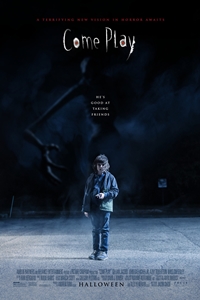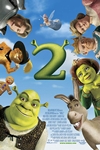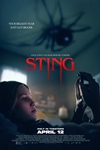Come Play (PG-13) ★★
 Sometimes, the lure of generic horror tropes can be too strong for even the most high-minded films to avoid. Come Play is an example. The premise intrigues with its potential - the idea that just because something looks like a traditional "monster," that doesn't mean it is a monster. Sadly, that's more of a case of lip-service than reality. After teasing the viewer with the possibility that this movie might be interested in doing more than offering jump-scares, claustrophobic point-of-view shots, and child-in-peril scenes, Come Play proceeds to provide those all-too-familiar sequences and more. Worse, because the lead character is autistic, it doubles down on the issues that can arise from communication difficulties.
Sometimes, the lure of generic horror tropes can be too strong for even the most high-minded films to avoid. Come Play is an example. The premise intrigues with its potential - the idea that just because something looks like a traditional "monster," that doesn't mean it is a monster. Sadly, that's more of a case of lip-service than reality. After teasing the viewer with the possibility that this movie might be interested in doing more than offering jump-scares, claustrophobic point-of-view shots, and child-in-peril scenes, Come Play proceeds to provide those all-too-familiar sequences and more. Worse, because the lead character is autistic, it doubles down on the issues that can arise from communication difficulties.
I suppose if one enjoys straightforward PG-13 horror, there's something to be said for Come Play. It feels like a Blumhouse throw-away, complete with the low-profile cast and last-act narrative twist. The creature creation is effective. As Steven Spielberg showed in Jaws and Ridley Scott seconded in Alien, sometimes glimpses of a monster are more effective than long, lingering looks. And, for parents who have come to regard smartphones, tablets, and big-screen TVs as the enemy, Come Play offers a form of virtual catharsis.
As we learn during the course of the film, those screens form a two-way window between our world and another one. On the other side, there's something - let's call him Larry - who's trying to make the window into a door. There's a procedure for this. He needs to find a friend and, to accomplish that, he has an insidious piece of malware that he uses. Apparently, Norton Anti-Spyware hasn't figured out how to neuter this because it appears on the phone and tablet used by elementary schooler Oliver (Azhy Robertson), who lives with his helicopter mother, Sarah (Gillian Jacobs), and his often-absent father, Marty (John Gallagher Jr.). Oliver is a high functioning autistic. He's speech-delayed (can't talk) but can write and use a program on his phone to communicate. That's why he's able to bring a phone into class while other students can't - something that earns him the ire of his once-best friend, Byron (Winslow Fegley).
Oliver learns about Larry through a "children's story" app that appears magically on his phone. He reads through it and discovers that Larry isn't evil; he's just misunderstood. He's lonely and all he wants is a friend. If Come Play had gone with this narrative, it could have offered a compelling and atypical story. Sadly, while it doesn't completely abandon this premise, it strays pretty far from it. I guess writer/director Jacob Chase didn't want to be accused of ripping off A Monster Calls.
Although Larry is the film's antagonist, one could argue that the real villain of the peace is technology. Screens, regardless of the size or device, are the means by which Larry captures the attention of a would-be "friend" and also provide his point of entrance. He uses electricity to travel, although the details of how this works are murky and I'm not sure the rules remain consistent throughout the story. The only time when the characters feel safe is when they're in the middle of nowhere with no screens and no electricity.
The decision to make Oliver autistic provides filmmaker Chase (whose directorial resume is populated primarily with shorts - Come Play is an adaptation of one of those) with an easy opportunity to create a barrier between the young protagonist and the adults around him. It also explains why he might be a preferred target for Larry since his condition makes him susceptible to loneliness and isolation (especially since his mother doesn't make the best parenting decisions - consider, for example, her belief that a mostly unsupervised sleepover is a good way to expand Oliver's social horizons). But there are times when the movie feels exploitative of the autism (although, to be fair, other films have used deafness and blindness similarly).
Come Play ultimately feels like just another in a long line of disposable, unmemorable kid-in-danger PG-13 horror films, of which there are too many. Although the premise offers the potential for the story to branch out in an interesting direction, it never happens. The trajectory remains familiar and, aside from a few solid scares, the film doesn't offer enough to distinguish it from the many other low-budget efforts clamoring for the attention of the same audience.
© 2020 James Berardinelli
To get the full Quicklook Films experience, uncheck "Enable on this Site" from Adblock Plus
box office top 10

Civil War Released: April 12, 2024 Cast: Kirsten Dunst, Wagner Moura 25.7M

Godzilla x Kong: The New Empire Released: March 29, 2024 Cast: Rebecca Hall, Brian Tyree Henry 15.5M

Ghostbusters: Frozen Empire Released: March 22, 2024 Cast: Paul Rudd, Carrie Coon 5.8M

Kung Fu Panda 4 Released: March 8, 2024 Cast: Jack Black, Viola Davis 5.5M

Dune: Part Two Released: March 1, 2024 Cast: Timothée Chalamet, Rebecca Ferguson 4.3M

Monkey Man Released: April 5, 2024 Cast: Dev Patel, Sikandar Kher 4.1M

The First Omen Released: April 5, 2024 Cast: Nell Tiger Free, Bill Nighy 3.8M

The Long Game Released: April 12, 2024 Cast: Dennis Quaid, Gillian Vigman 1.4M

Shrek 2 Released: May 19, 2004 Cast: Mike Myers, Eddie Murphy 1.4M

Sting Released: April 12, 2024 Cast: Alyla Browne, Ryan Corr 1.2M






